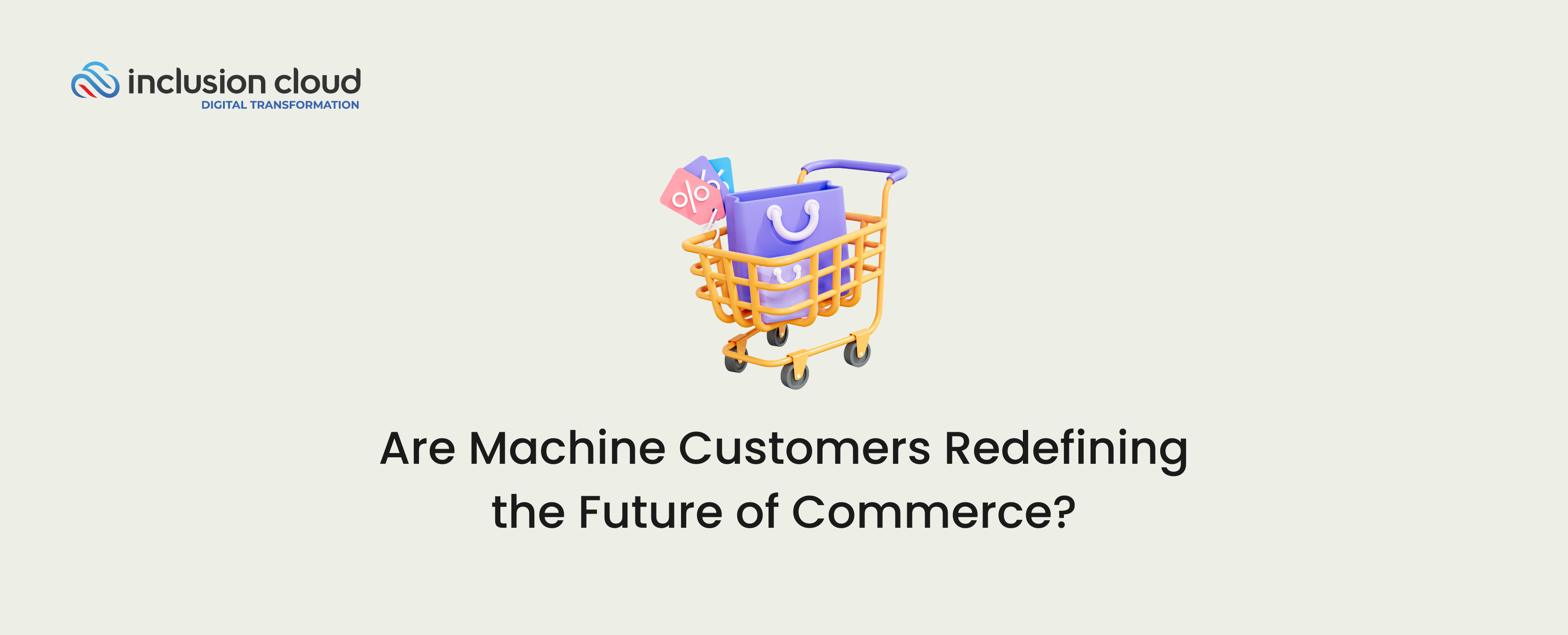Picture this: In a smart factory, a machine on the assembly line detects a worn-out part. Quietly, it orders a replacement, schedules maintenance, and even negotiates the best deal – all without human intervention. This scenario is becoming increasingly common as we step into the era of ‘machine customers’ – a transformative trend where machines not only perform tasks but also make purchasing decisions.
This concept goes beyond automated reordering or predictive maintenance. It’s about machines actively participating in the market as autonomous buyers, equipped with AI and IoT technology. They can analyze their own performance, predict future needs, and even handle transactions. From industrial equipment to office printers, these smart machines are reshaping the traditional business-to-business (B2B) landscape.
What Is a Machine Customer?
A machine customer is a device that uses artificial intelligence (AI) and the Internet of Things (IoT) to autonomously buy goods and services. It’s different from older automated systems because it doesn’t just follow set rules. Instead, these machines can check how they’re working, figure out what they’ll need in the future, and make their own choices to buy things. This means they can do tasks like ordering parts or services by themselves, without needing a person to give them instructions.
The Journey to Machine Customers
To effectively engage with machine customers, it’s crucial to recognize the three developmental stages outlined by Gartner. The journey begins with Bound Customers, where devices like HP Instant Ink and Amazon Dash operate within set parameters, executing specific tasks as programmed. Progressing to the Adaptable Customer phase, machines such as robotrading systems and autonomous vehicles gain more decision-making flexibility, acting with minimal human input. The pinnacle is the Autonomous Customer stage, where machines are fully independent, handling complex transactions and decision-making processes. This evolution from bound to autonomous entities presents a dynamic landscape for businesses to navigate in the realm of machine customers.
The Surge of Smart and IoT Devices
The surge of smart and IoT devices provides a solid foundation for the rise of machine customers. In the U.S., the smart home market is projected to reach $534.8 billion by 2028, with a 12.3% annual growth rate from 2023 to 2028 according to Statista. As stated by IDC, it is projected that the nation will have 30.1 billion smart devices by 2025, up from 13.4 billion in 2021. Additionally, the widespread integration of virtual assistants, with an estimated 150 million voice assistants in the U.S. by 2026, further exemplifies the rapid expansion of smart and IoT devices.
The Transformation of Goods and Service Commerce
In this context of an increasingly connected world, a wide range of devices could take on the role of machine customers. Here are some examples:
Smart home devices:
These include thermostats that learn your temperature preferences and optimize heating/cooling, reducing energy usage. Lighting systems can adjust brightness based on external conditions for energy efficiency.
Vehicles:
In the automotive industry, vehicles can also autonomously order replacement parts, such as tires or other auto-components, when needed.
Industrial robots:
These robots on manufacturing lines can also order replacement parts when they’re worn out. They analyze data to optimize production processes, ensuring timely delivery of goods.
Agricultural machinery:
Farm machinery like tractors analyze soil conditions, weather data, and crop health to make decisions about planting, irrigation, and harvesting, enhancing crop yields.
Smart appliances:
Household appliances like refrigerators can reorder groceries when supplies are low, simplifying grocery shopping and ensuring you never run out of essentials.
Challenges of Machine Customers
While the emergence of machine customers presents numerous opportunities, it also comes with its fair share of challenges that businesses must address:
1. Redesigning sales strategies
To effectively engage with machine customers, businesses need to revamp their sales strategies. This involves adapting approaches to cater to both human and machine decision-makers. Companies must find a balance between traditional sales techniques and methods that resonate with autonomous machines.
2. Ensuring interoperability
As machine customers proliferate across industries, ensuring seamless communication and compatibility with diverse machine systems becomes crucial. Businesses must invest in technology that allows their products and services to interact effortlessly with various types of machine customers.
3. Data security
Machine-driven transactions involve sensitive data. Safeguarding data integrity and privacy is paramount to prevent unauthorized access and protect confidential information. Businesses must implement robust cybersecurity measures to ensure that machine customers’ transactions are secure.
4. Balancing customer needs
Striking a balance between human and machine customer needs can be challenging. Businesses must navigate the complexities of managing two distinct customer types with unique preferences and requirements. This entails adapting products, services, and customer support to meet these diverse demands.
5. Transition complexity
The transition to accommodate machine customers within existing business models can be complex. Companies need to manage this transition effectively while ensuring minimal disruption to their operations and customer relationships.
These challenges underscore the importance of proactive strategies and preparedness in the era of machine customers. Businesses that address these challenges strategically are better positioned to thrive in this evolving landscape.
Conclusion
In conclusion, the rise of machine customers is reshaping businesses, and adapting strategies is crucial. Ignoring the unique decision-making processes of machine customers can lead to missed opportunities. These machines are transparent in their logic-based decision-making, process vast data efficiently, and prioritize task completion over emotions. Recognizing these differences and addressing them in business strategies is essential to thrive in the era of machine customers. Gartner emphasizes that transparency, data processing capabilities, and efficiency are key factors to consider when engaging with machine customers, and businesses should align their approaches accordingly to stay competitive in this evolving landscape.
If you found this article insightful and want to stay updated on AI trends and future developments, follow Inclusion Cloud? Stay informed about the latest in AI and its impact on businesses.





